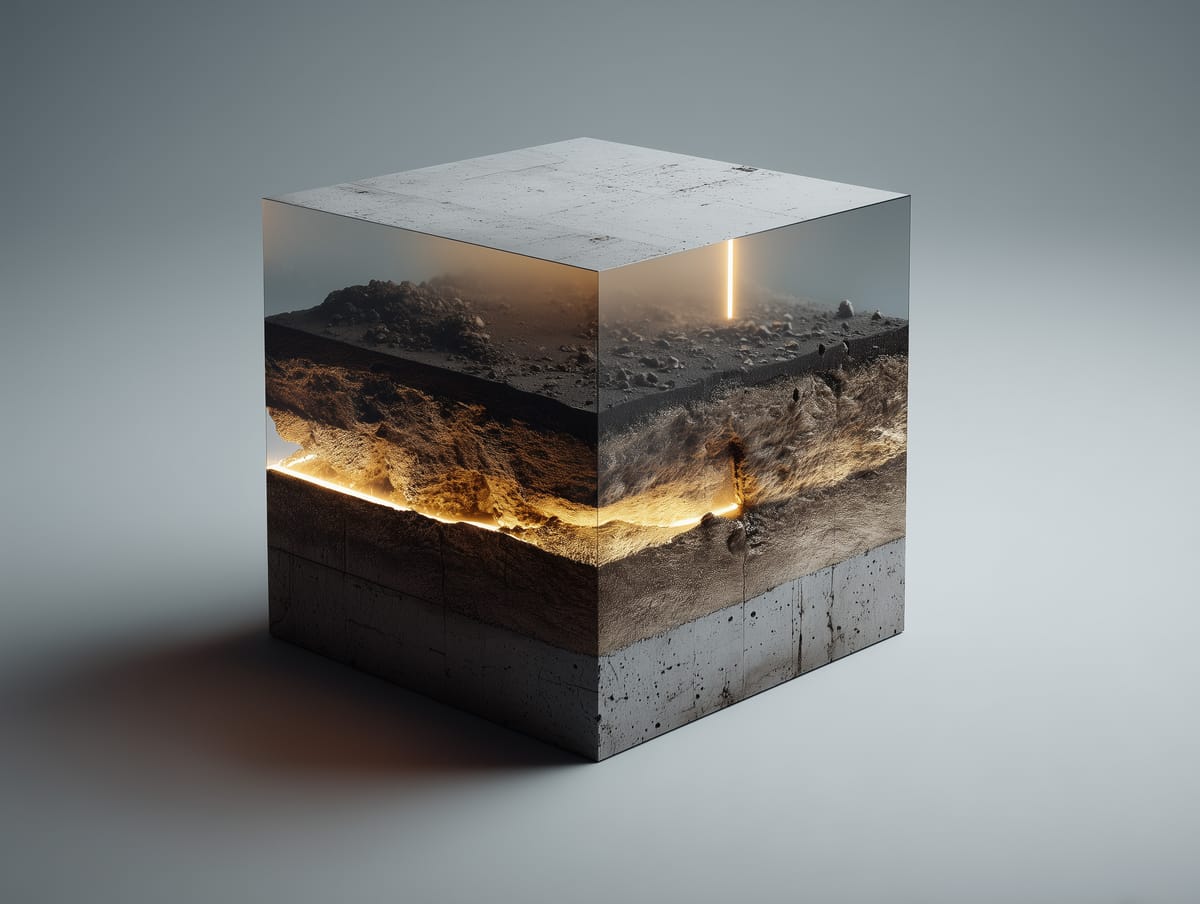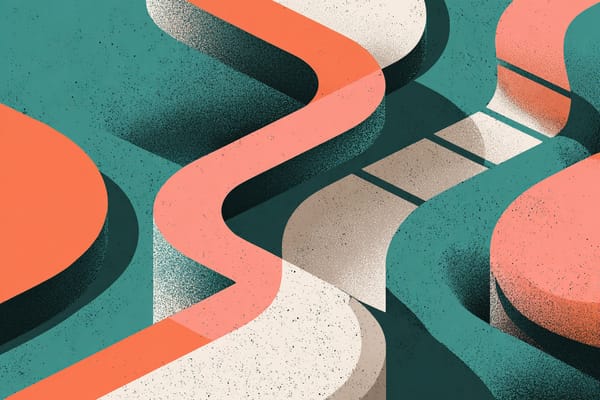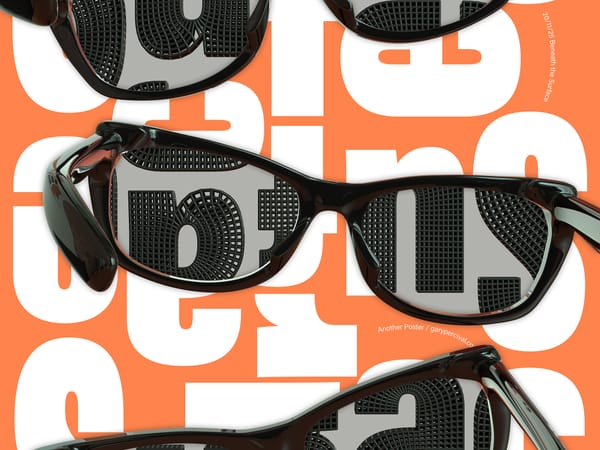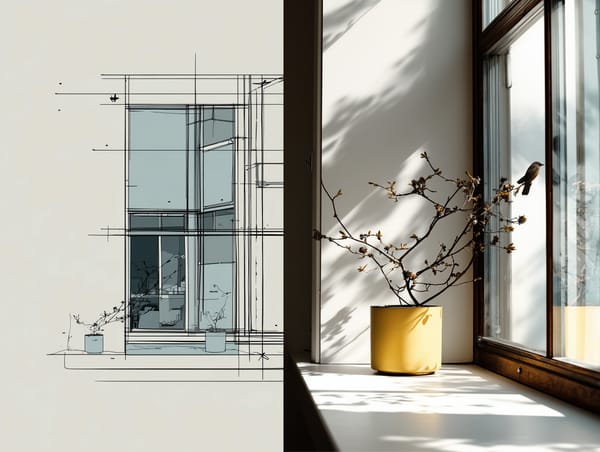Keep Digging. You’re Closer Than You Think
"Progress rarely looks like progress when you’re inside it—it feels like repetition, sounds like silence, and hides just beneath the surface of persistence."

Every creative reaches a point where the work feels heavier than it should. You’ve put in hours, built momentum, followed the plan—and still, the results seem buried somewhere below the surface.
You’ve been digging. But all you see is dirt.
That’s usually when people stop. They assume they’ve hit the limits of their talent, or that the idea wasn’t as good as they thought. But most of the time, that feeling doesn’t mean you’ve gone too far—it means you’re finally getting close.
Progress rarely looks like progress when you’re inside it.
It looks like repetition. It feels like doubt. And it often sounds like silence.
But if you can stay with it—keep digging—you’ll discover that what looked like a dead end was just the hard ground before the gold.
The Hidden Depths of Creative Work
In creative fields, effort doesn’t always show.
A designer can spend days adjusting letterforms that no one consciously notices. A freelancer might send a dozen pitches before one lands. A concept might go through five versions before the sixth finally clicks.
To anyone else, those first five versions might look like failures. But they’re really foundations—layers of soil that had to be moved for the final idea to breathe.
The irony is that the closer you get to something great, the harder it becomes to see how far you’ve come. You’re knee-deep in iterations, over-analysing details, fighting creative fatigue. It feels like you’re stuck—but you’re usually one refinement away from clarity.
That’s the cruel and beautiful rhythm of creative work: the reward hides just past the moment most people give up.
Most progress hides beneath the surface, which is why we crave those moments of sudden clarity.
The Myth of the Breakthrough Moment
We love the story of the sudden breakthrough—the idea that genius strikes out of nowhere. But if you talk to anyone who’s been doing creative work for a long time, they’ll tell you that “breakthroughs” are almost never spontaneous.
They’re accumulations.
A poster that feels effortless today was built on hundreds that didn’t. A designer’s “signature style” usually emerges from years of repetition, refinement, and the willingness to look at the same subject from every possible angle.
That’s why the advice to “keep digging” isn’t motivational fluff—it’s logistical reality.
If you stop too early, you’re not just quitting; you’re leaving the gold unmined.
Repetition Isn’t Failure—It’s Refinement
Repetition often gets a bad reputation in creative circles. We want to be seen as inventive, not repetitive. But repetition is where originality takes root.
Every time you revisit an idea, you see it more clearly. You sharpen your instincts. You separate what’s essential from what’s decorative.
That’s why repetition matters: it teaches you what your creative fingerprints actually look like.
Freelancers who stick with a process long enough start to notice subtle improvements—faster workflows, cleaner feedback cycles, and stronger relationships with clients.
Designers who iterate relentlessly begin to see patterns: what compositions feel balanced, which colour relationships hum, and which typographic choices consistently communicate well.
Those insights don’t arrive in a flash of inspiration. They accumulate through the quiet, consistent act of showing up again and again—even when you’re tired of looking at the same thing.
Repetition isn’t what keeps you stuck. It’s what gets you unstuck.
When Doubt Feels Like Evidence
Every creative project passes through a phase where confidence collapses.
The early excitement fades. The vision blurs. The work feels average.
That’s the point when many creatives pivot—they start a new idea, try a new style, look for a fresh project. It’s easier to chase novelty than to wrestle with doubt.
But that moment of uncertainty isn’t proof you’re failing—it’s proof you’re learning.
You’re finally close enough to the edges of your ability to feel the resistance. You’ve exhausted the obvious choices. You’re in new territory now, and your brain hasn’t built a map for it yet.
That discomfort is a compass.
It points to where your growth lives.
So instead of running from it, dig toward it. The resistance is there because something valuable is buried beneath it.
The Problem With Constant Reinvention
Many designers—especially freelancers—feel pressure to keep reinventing themselves. Every portfolio refresh or new post becomes another attempt to prove you’re evolving.
But reinvention without foundation isn’t growth; it’s drift.
If you switch directions every time progress feels slow, you never stay with an idea long enough to master it. You keep starting over at the shallow end, polishing new surfaces instead of digging deeper into one.
Depth doesn’t come from novelty—it comes from staying.
Some of the most respected creatives aren’t the ones who constantly change styles; they’re the ones who explore the same themes so deeply that no one else can touch them.
They didn’t move on when it got difficult—they kept digging.
Mining What Works
When you find something that resonates—an idea, a process, a tone, a client niche—that’s not the moment to move on. That’s the moment to mine.
In freelancing, that might mean expanding on a project type that clients consistently love instead of chasing a dozen unrelated gigs.
In design, it might mean refining one visual direction across multiple pieces until it becomes unmistakably yours.
In writing, it might mean returning to the same core message—expressed through new angles—until it becomes a philosophy.
You don’t need ten new ideas. You need to extract everything from the one that’s already working.
Because mastery doesn’t come from having more opportunities—it comes from making more of the opportunities you already have.
Using Patience as a Creative Tool
Patience isn’t passive—it’s a form of creative discipline.
When you slow down enough to stay with your work, you start to notice things speed can’t reveal: subtle proportions, tonal balance, emotional texture.
Freelancers who rush to “finish” rarely reach their best work. But those who give their ideas room to breathe—who return to them over time—discover layers that weren’t visible at first glance.
Patience doesn’t mean waiting endlessly. It means working consistently without demanding instant reward.
It’s the space where clarity grows.
And if you can hold that space—keep digging even when the ground feels heavy—that’s where creative confidence is built.
The Value of Invisible Work
Not every hour you spend shows up in the final result. The work you do is often invisible, but it is valuable nonetheless:
- The time spent exploring dead ends that sharpen your intuition
- The rejections that strengthen your resilience
- The revisions that refine your taste
- The drafts that never see daylight but refine your voice
That’s the paradox of creative progress—it often looks like nothing’s happening.
But invisible work compounds. Every small refinement, every failure, every uncelebrated draft becomes part of your creative infrastructure.
It’s what allows you to work faster, decide smarter, and trust your instincts in the future.
The reward for staying with it isn’t just a better outcome—it’s a stronger creative self.
Momentum Through Maintenance
“Keep digging” doesn’t always mean pushing harder. Sometimes it means maintaining the ground you’ve already cleared.
That’s what separates consistent creatives from sporadic ones—maintenance.
Maintaining your craft.
Maintaining your relationships.
Maintaining your routines.
Because momentum isn’t about constant acceleration—it’s about not losing traction when things slow down.
Keep your creative tools sharp. Revisit old projects with fresh eyes. Reconnect with past clients. Re-evaluate your processes.
Every small act of maintenance is another shovel of progress.
You’re not starting over—you’re deepening the hole in the right direction.
Clarity Comes After Frustration
If you’re in that frustrating middle stage—where nothing’s clicking—remember this: creative clarity almost always arrives after the point where you want to quit.
That’s not coincidence. It’s a pattern.
The moment your brain finally quiets from overthinking is the same moment intuition takes over.
You’ve done the work. You’ve learnt the rules. Now the subconscious starts rearranging it all into something new.
That’s when the breakthrough happens.
But only if you’ve kept digging long enough to reach it.
Closing Thought
Success—creative or otherwise—rarely depends on brilliance. It depends on endurance.
Most people stop digging just before they reach the gold.
They get tired. They get bored. They mistake temporary resistance for permanent limitation.
But the creatives who last—the ones whose work feels inevitable, grounded, and unmistakable—are the ones who keep showing up, shovel in hand, even when the soil turns to stone.
If that’s where you are right now—keep digging.
You’re closer than you think.
💡 If you enjoy this, you'll probably like my weekly design experiments:
Another Poster → · Instagram →



